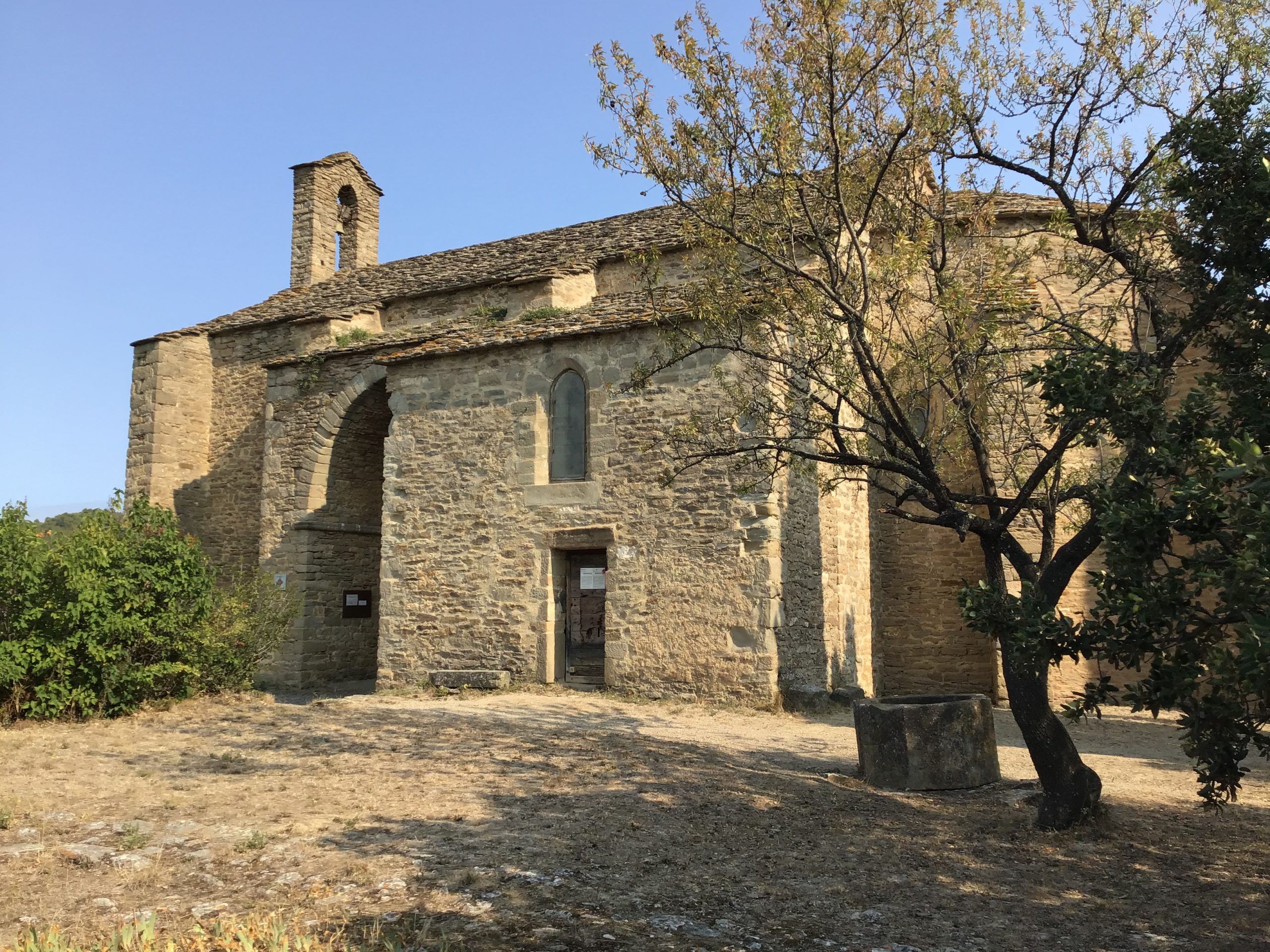Presentation and History

Located about 1.5 km above the village of Siran, the chapel is isolated in the middle of vineyards and garrigue. The existing Gothic church was built in the 13th century. It replaced a smaller Romanesque building, of which the plan of the apse was found.
The chapel, built in gray stone, is covered entirely with slate. Originally, the building consisted of a simple nave with a pointed barrel vault, extended by a polygonal choir with five sides.
In the late fourteenth century two side chapels were added between the buttresses, they form a transept. The coats of arms of the lords of Siran and of the village are sculpted on the keystones of these chapels. The entrance, surmounted by a porch, is located on the southern wall. The west façade is topped by a small bell tower.
After the French Revolution, the chapel was used as an agricultural building and sheepfold until it was bought and restored in 1960, on the initiative of Canon Giry, then curator of the Ensérune Museum, and with the support of the inhabitants of the village of Siran.
The building was classified as a historical monument on 24/11/1954.
Wall paintings
What makes the building so interesting is the presence inside of a painted decoration, realized between the XIII and XV centuries.
The murals include a polychrome geometric decoration (predominantly gold and red) from the 13th century and a figurative decoration from the 14th and 15th centuries.
Particularly noteworthy are: the Tree of Jesse, partly covering an older painting, scenes from the Passion of Christ, a scene from the Apocalypse with the representation of the Heavenly Jerusalem, the figures of Saint Bruno and Saint Michael.
The representation of a Christ of Pity, in the north transept, is particularly moving.

Bibliographic references:
P. Delmas, Notice sur Centeilles, in Bulletin archéologique de l'Hérault, Montpellier, 1930.
J. Giry and M.M. Metge, * Notre Dame de Centeilles, Notice descriptive illustrée, Rodez, 1990.
B. Mesuret, in Peintures murales du sud-Ouest de la France, Toulouse, 1963.
H.P. Eydoux, in Monuments méconnus, Languedoc et Roussillon, Perrin 1977.
(* for sale on site)

The Association
The Chapel was given in 1961 to the Diocesan Association of Montpellier, which handed it over in 2006 to the Association Amis de Centeilles, whose headquarters are in Siran.
The Association's aim is to safeguard the Church of Notre Dame de Centeilles and its surroundings, as well as to promote its spiritual and cultural activities.
The village of Siran is located 35 km west of Béziers and 30 km east of Carcassonne.
A place to pray
Historical documents concerning the chapel are scarce. The archives of Siran were destroyed during the Revolution and only the registers of the parish church mention it. It is possible that the annual fair of Siran, on March 26, was held in this place.
Since the development of the chapel, Mass is celebrated at least once a year. On the Sunday after August 15, the annual festival takes place. Many of the visitors take the time to pray for a moment to the Blessed Virgin to whom the shrine is dedicated.


